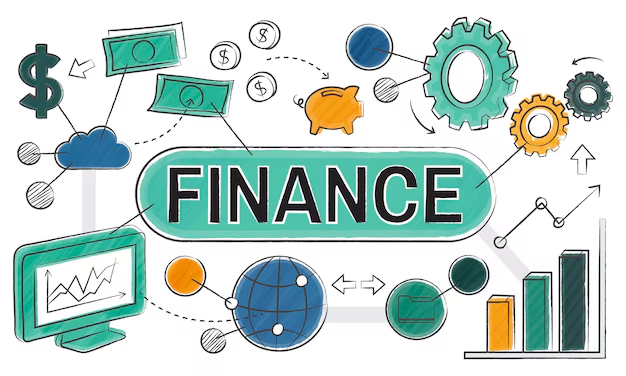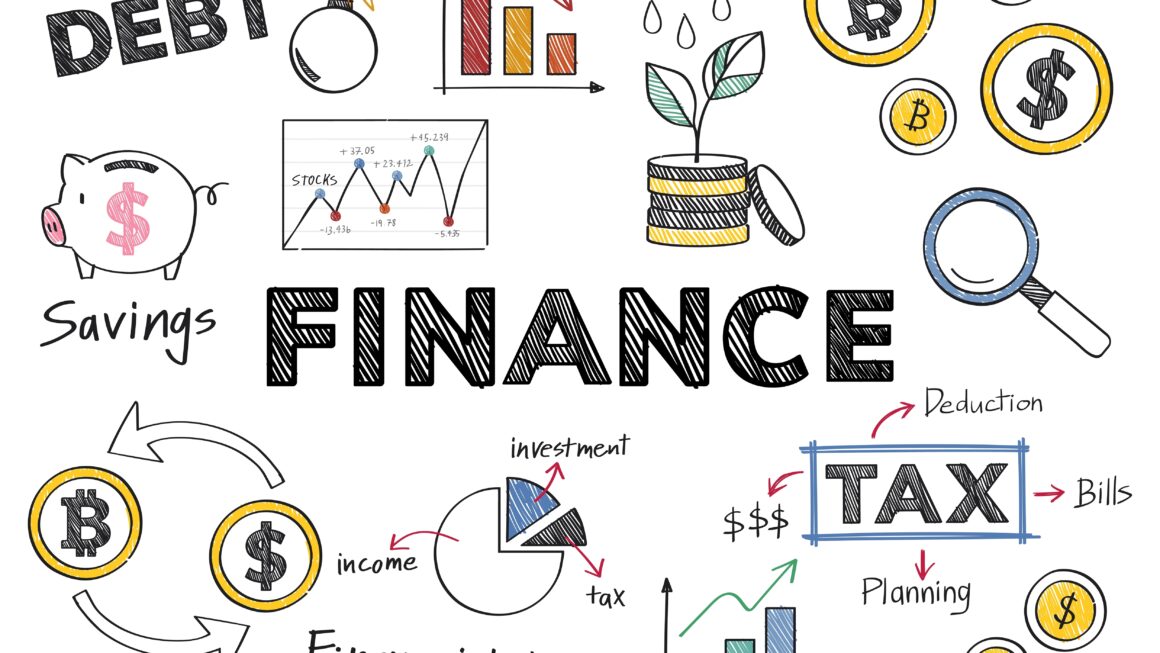Personal finance is one of the most important aspects of our lives. Whether you’re working towards financial independence, planning for retirement, or simply trying to manage day-to-day expenses, understanding how to manage money effectively is crucial to achieving financial freedom. It’s not just about making more money; it’s about how you manage, save, and grow the money you have. Learning the principles of personal finance allows you to take control of your financial future and build wealth over time.
In this guide, we’ll break down the key principles of personal finance, how to create a roadmap for building wealth, and the habits you can develop to reach your financial goals.
1. The Basics of Personal Finance
Personal finance refers to the management of an individual’s money, including budgeting, saving, investing, and planning for future financial needs. It is the foundation for achieving financial security and independence. Here are the core elements of personal finance:
Budgeting
A budget is the cornerstone of good personal finance. It helps you track your income and expenses, ensuring that you’re living within your means. By sticking to a budget, you can allocate money to the things that matter most to you, such as saving for retirement, paying off debt, or building an emergency fund.
Steps to create a budget:
- List Your Income: Identify all sources of income you receive monthly, including salary, freelance work, and passive income.
- Track Your Expenses: List all monthly expenses, including fixed costs like rent or mortgage, utilities, groceries, insurance, and discretionary spending like entertainment and dining out.
- Set Savings Goals: Allocate a percentage of your income toward savings, ideally 20% or more.
- Adjust Spending: If your expenses exceed your income or you’re not saving enough, identify areas where you can cut back.
A simple yet effective method to budget is the 50/30/20 rule:
- 50% of your income goes toward needs (rent, utilities, groceries).
- 30% goes toward wants (entertainment, dining out).
- 20% is dedicated to savings and debt repayment.
Building an Emergency Fund
An emergency fund is money set aside for unexpected events, such as medical emergencies, job loss, or urgent repairs. Financial experts recommend having three to six months’ worth of living expenses saved up in an easily accessible account, like a high-yield savings account. This fund provides peace of mind and prevents you from going into debt during unforeseen circumstances.
Managing Debt
Debt can hinder your financial growth if not managed properly. The key is to prioritize high-interest debt, such as credit card balances, and work towards paying it off aggressively. Once high-interest debts are cleared, focus on other debts, such as student loans or mortgages.
To manage debt effectively:
- Pay more than the minimum: Always try to pay off more than the minimum payment, especially on high-interest debts.
- Use the debt snowball method: Start by paying off the smallest debt first, then move on to larger debts.
- Use the debt avalanche method: Pay off debts with the highest interest rates first to save money on interest.
Living Below Your Means
One of the most important steps toward financial freedom is living below your means. This means spending less than you earn and avoiding lifestyle inflation (the tendency to increase spending as your income increases). The more you can save and invest, the faster you will achieve financial freedom.
2. Building Wealth: The Road to Financial Independence
Once you’ve mastered the basics of personal finance, the next step is to build wealth. This involves growing your savings, making investments, and making smart financial decisions that put your money to work for you.
Investing: Grow Your Money
Investing is one of the most powerful tools for building wealth. By putting your money into stocks, bonds, real estate, or mutual funds, you allow your money to grow over time. Compound interest—interest earned on interest—is one of the key drivers of wealth accumulation.
Types of investments:
- Stocks: Investing in individual companies can offer high returns, but also comes with high risk.
- Bonds: A more conservative investment, bonds are essentially loans you give to corporations or governments that pay you interest.
- Real Estate: Owning property can provide passive income through rent or long-term appreciation.
- Mutual Funds and ETFs: These investment vehicles pool money from multiple investors to invest in a diversified portfolio of stocks, bonds, or other assets.
- Index Funds: A popular option for beginner investors, index funds track a specific market index (like the S&P 500) and offer low fees and long-term growth potential.
Steps to get started with investing:
- Start Early: The earlier you start investing, the more you benefit from compound interest.
- Choose Low-Cost Investments: Opt for investments with low management fees (like index funds or ETFs).
- Diversify Your Portfolio: Spread your investments across different asset classes to reduce risk.
- Set Long-Term Goals: Investing is about long-term growth, not short-term gains. Stick to your strategy and avoid emotional decision-making during market volatility.
Retirement Planning: Secure Your Future
Retirement might seem distant, but the earlier you start planning for it, the better. Contributing to retirement accounts, such as a 401(k), IRA, or Roth IRA, can help you save for the future and take advantage of tax benefits.
Employer-sponsored 401(k): If your employer offers a 401(k) plan, take advantage of it. Many employers match contributions, essentially offering free money. Aim to contribute at least enough to receive the full employer match.
Individual Retirement Accounts (IRAs): IRAs allow you to contribute a portion of your income to retirement savings. A Roth IRA, for instance, offers tax-free growth on your investments, while a traditional IRA provides tax-deductible contributions.
Other retirement options: Depending on your job and income, you may also have access to a SEP-IRA or Solo 401(k) if you’re self-employed.
Aiming to save 15-20% of your annual income for retirement can set you on the path to financial independence.
Insurance: Protecting Your Wealth
Insurance plays an essential role in safeguarding your financial well-being. It protects you and your family from unforeseen events that could wipe out your savings.
Key types of insurance to consider:
- Health Insurance: Covers medical costs, including doctor visits, hospital stays, and medications.
- Life Insurance: Provides financial support to your loved ones if something were to happen to you.
- Disability Insurance: Replaces a portion of your income if you are unable to work due to injury or illness.
- Homeowners/Renters Insurance: Protects your property and personal belongings from damage or theft.
Tax Planning: Minimize Your Tax Liability
Understanding taxes is an important aspect of personal finance. The more you know about how taxes work, the better you can plan to minimize your tax liability. You can take advantage of tax-deferred accounts like 401(k)s and IRAs to lower your taxable income, as well as deductions for things like mortgage interest or charitable contributions.
Working with a tax advisor or accountant can help you navigate complex tax laws and maximize your returns.
3. Achieving Financial Freedom: Mindset and Habits
Achieving financial freedom requires more than just knowledge of personal finance principles; it’s also about adopting the right mindset and habits.
Developing a Growth Mindset
A growth mindset is the belief that your abilities and intelligence can be developed through hard work, dedication, and learning. In personal finance, a growth mindset means understanding that your financial situation is not static. With effort, discipline, and smart decision-making, you can increase your wealth and achieve financial freedom.
Habit Building: Automate and Track Your Progress
Consistency is key when it comes to personal finance. Set up automatic contributions to your savings and retirement accounts to ensure you’re consistently putting money aside for the future. Tracking your spending and progress allows you to see where you’re making gains and where you might need to adjust.
Apps like Mint, YNAB (You Need A Budget), or Personal Capital can help you track your budget, investments, and financial goals.
Live With Intent
Living with intention means aligning your spending with your values. This can involve making conscious decisions about how and where you allocate your resources. For example, if travel is important to you, you may choose to prioritize experiences over material possessions. Ultimately, living with intention will help you focus on what truly matters and avoid distractions from achieving your financial goals.
4. Key Takeaways
- Budgeting: Create a clear budget to track income and expenses, ensuring you live within your means and prioritize saving.
- Emergency Fund: Build an emergency fund to cover three to six months of living expenses for unexpected events.
- Investing: Start investing early in diversified, low-cost assets like index funds or real estate to grow your wealth over time.
- Retirement: Contribute to retirement accounts (401(k), IRA) to secure your financial future.
- Insurance: Protect your wealth with the right insurance coverage, including health, life, and disability insurance.
- Tax Planning: Plan for taxes to minimize your tax liability and maximize your savings.
- Mindset and Habits: Cultivate a growth mindset, develop consistent habits, and automate savings to achieve financial freedom.
Mastering personal finance is a lifelong journey that requires discipline, commitment, and continuous learning. By following these principles and taking control of your finances, you can build wealth, achieve financial security, and ultimately gain the freedom to live life on your terms.




